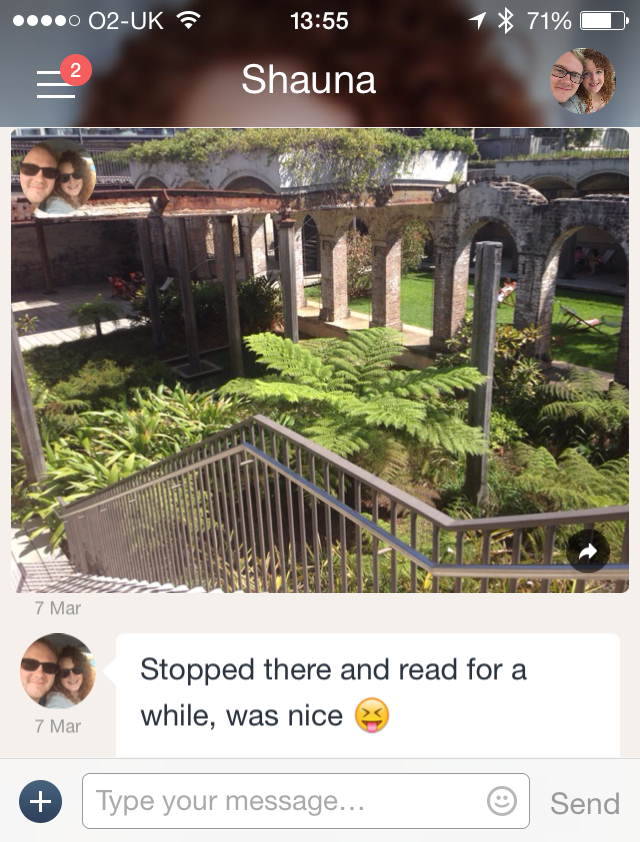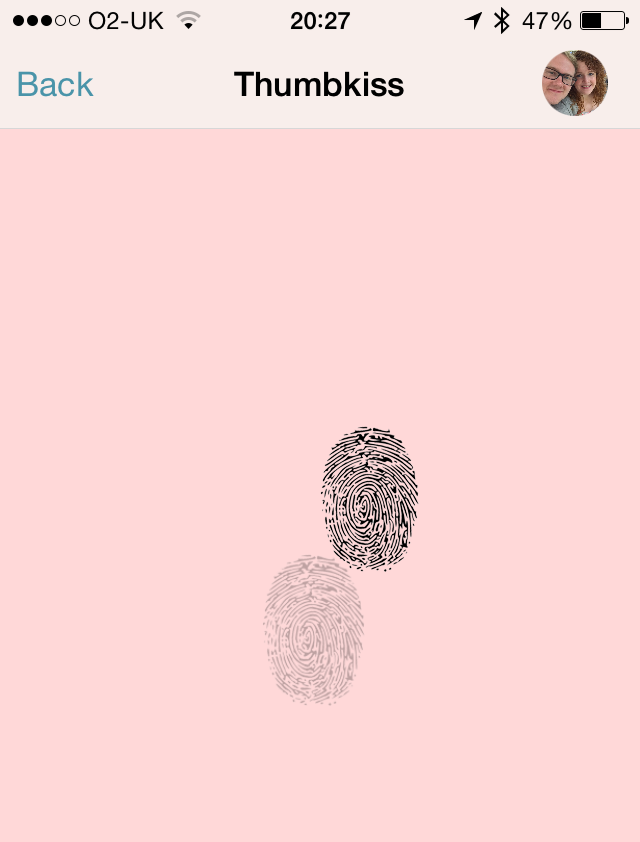My PhD research is focussed on Digital Separations – looking at what happens when a couple come to the end of a relationship with regards to their digital memory cues, and how technology can be used to support the individuals.
Although I am primarily based at the University of Dundee in (chilly) Scotland, I have had the good fortune to also enrol at UTS and become part of the Materialising Memories programme, spending time in (the much sunnier) Sydney. While preparing to spend time at UTS earlier this year I stumbled across an ironic problem – though I was investigating how technology can support people ending relationships, I needed to find technology to help me maintain my relationship with my partner while we were halfway around the world from one another.
Suddenly I had a vested interest in how technology could support people staying together.
The more I thought about it, the more I came to realise that the ways in which Shauna and I stay in contact during a typical day might fall short across nine and a half thousand miles, an 11 hour time difference and a reversal of seasons. Writing an email about what I’m up to, or receiving texts from Shauna about the project she’s working on would keep us up to date on each other’s lives, but we would want more than just various updates scattered across apps.
We decided that we wanted to communicate with one another using a variety of media within one channel to give each other a fuller picture of our time apart; this is what led us to Couple.
Couple is an app that’s billed as “An Intimate Place For Two”; upon creating an account you choose a partner to communicate with through the app. You can only have one partner linked to your account, creating a private space on your device that is separate from all other communications.
While in Sydney, everything Shauna and I sent to one another through Couple was stored in a timeline – text, images and video were all displayed in chronological order in one place. We shared voice recordings, location updates, and sketches with one another, as well as a handy pre-set “thinking of you” illustrated message.

One of my favourite features of the app was the Thumb Kiss. Both users press their thumbs to the same point on their respective screens and once the thumbs have been held in place for a few seconds, the screens glow red and the devices vibrate, mimicking physical contact. It’s beyond cheesy, but also kinda cute, and a strangely tangible way of connecting across a digital medium. It’s one of the few features that required both me and Shauna to be actively using the app at the same time, creating an intimate little interaction.

When Shauna joined me in Sydney for the last two weeks of my trip we continued using Couple to document our time together in Australia. Once we returned to Scotland, we came to realise that our Couple Timeline, which once acted as a very successful communication medium, had taken on a different role. It now acts as a diary of our adventures in Australia together, my first experiences of being at UTS and Shauna’s time as a single parent to our dog. The timeline contains cue after cue for memories of our time apart and together in Oz, and has ended up becoming a powerful tool for reminiscing.
In the end, creating digital memory cues and sharing them with Shauna helped us maintain our relationship during my time in Sydney. I gained valuable first hand experience in just how important digital memory cues can be to a relationship, and I can now more realistically imagine how difficult it must be having to confront them when a relationship comes to an end.